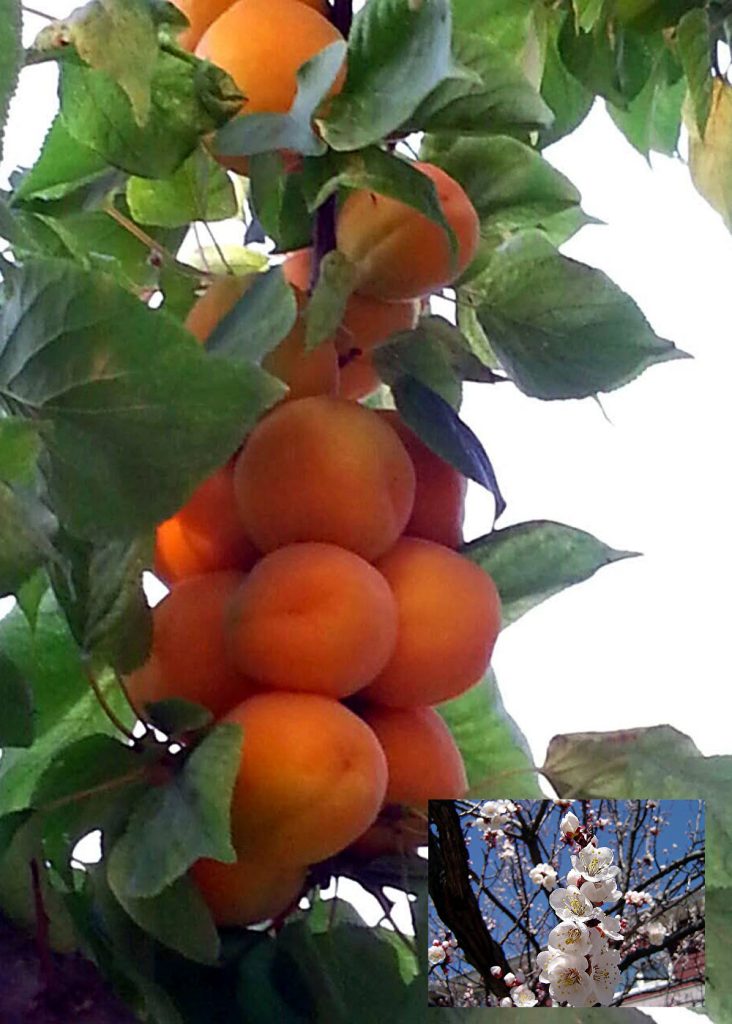
In the haiku by Saisei Muroo, there is a line that says, ‘Apricots are sweet and people are sleepy.’ It’s a line that makes you wonder what makes it a haiku, but you can still sense the feeling behind it. A ripe Anzu looks inherently sweet, and perhaps due to the thin covering of fuzz around it, it gives a soft and cozy impression, reminiscent of a futon. Anzu bloom slightly earlier than cherry blossoms and bear pale pink flowers similar to plums. They enter the harvesting season from June to July, and the Anzu fruits, resembling plums, ripen to a bright orange-yellow color, with the flesh taking on a reddish tint and easily separating from the pit. Anzu have a long history in Japan, as they are mentioned in the oldest Japanese pharmacological book called ‘Honzo Wamyo’ (918 AD). They were originally called ‘Karamomo’ at that time, and the name ‘Anzu’ came into use during the Edo period. Initially cultivated for medicinal purposes, their beautiful flowers led to their early use for ornamental purposes, and they became widely popular among the common people during the Edo period. Nowadays, they are not only consumed fresh but also widely cherished as jams. The main producing prefectures are Aomori and Nagano, which account for about 98% of the national production, with the top producer prefecture changing every year.
室生犀星の俳句に「杏あまさうな人は 睡むさうな」と言うのがあります。どこが俳句なのかなと思える句です。しかし感じは分かります。熟した杏は見るからに甘そうで、周りが薄毛で覆われているせいかほんわりとしていて布団を連想します。杏は桜よりもやや早く、梅によく似た淡紅色の花を咲かせます。6 〜7月には収穫期を迎え、ウメによく似た果実は橙黄色に熟し、果肉は赤みを帯びて核と離れやすくなります。日本に渡来したのはかなり古く、日本最古の本草書『本草和名』(918年)に「杏子」の記載があります。当時は「カラモモ」と読んだそうで、「アンズ」と呼ぶ様になったのは江戸時代からだと言われています。渡来当初は薬用として栽培されていましたが、花が綺麗なので、早くから鑑賞用としても用いられ、江戸時代には広く庶民にも行き渡った様です。今では生食用としてはもちろん、主にジャムとして愛用されています。生産県は青森県と長野県で、この二県で全国の約98%を生産し、毎年トップが入れ替わっています。
